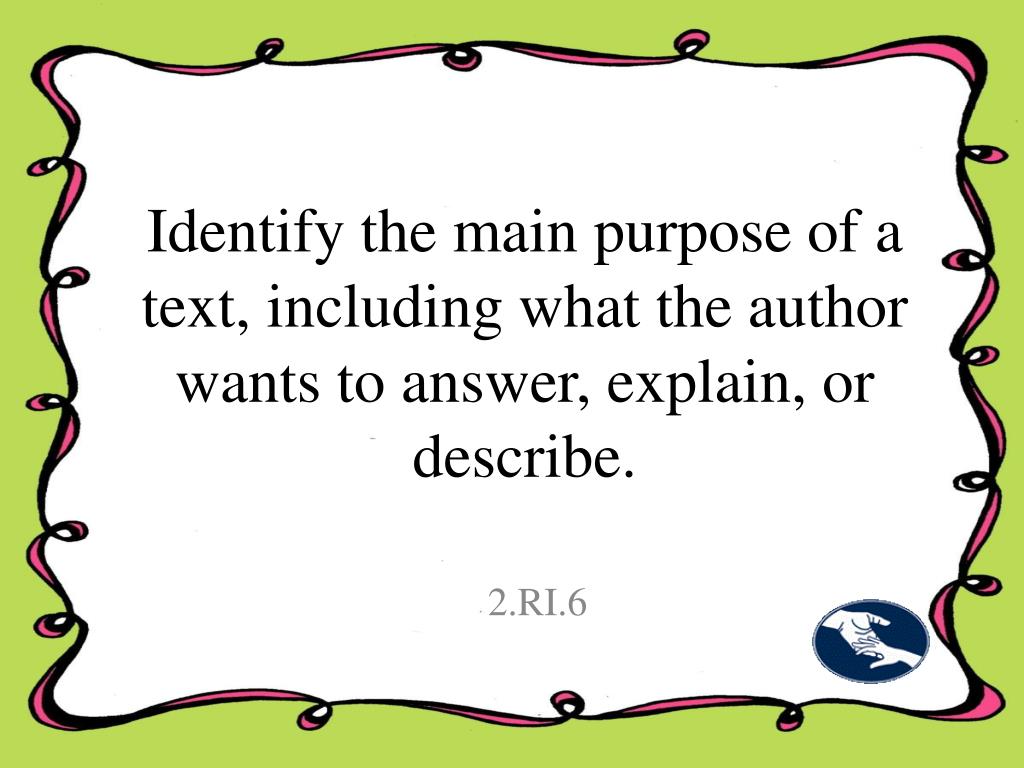Every piece of written text has a purpose, whether it’s to inform, persuade, entertain, or instruct. The primary purpose is the fundamental reason why the writer creates the text and what they aim to achieve by sharing it with readers.

Image: www.dreamstime.com
Understanding the purpose of a text is crucial because it helps identify the message it conveys, how it’s meant to be received, and which sections deserve more attention. In this article, we’ll delve into the various purposes of texts and how they shape their structure, style, and content.
Informative Texts
Informative texts are designed to convey facts, knowledge, or concepts. They present objective information without intentionally trying to influence readers’ opinions. This category includes:
- News articles: Provide factual accounts of recent events.
- Scientific articles: Describe scientific findings, theories, and observations.
- Textbooks: Offer comprehensive overviews of specific subjects.
- Encyclopedias: Provide detailed descriptions of concepts, people, and places.
- How-to guides: Explain how to accomplish tasks, DIY projects, or anything practical.
Persuasive Texts
Persuasive texts aim to change the reader’s beliefs, attitudes, or actions. Unlike informative texts, they attempt to convince readers by presenting one-sided or biased information. Examples include:
- Political speeches: Persuade voters to support a candidate or policy.
- Advertisements: Sell a product or service by highlighting its advantages.
- Opinion editorials: Express a particular viewpoint on a controversial topic.
- Argumentative essays: Present a structured and logical argument for a specific opinion.
Entertaining Texts
Entertaining texts seek to provide enjoyment or amusement. Their primary goal is to entertain readers and evoke emotions rather than educate or persuade. This category encompasses:
- Fiction: Novels, short stories, plays, and other works of creative imagination.
- Poetry: Written with a focus on rhythm, rhyme, and figurative language.
- Comic books: Utilize sequential art and minimal text to tell visual stories.
- Humorous essays or articles: Use humor to entertain and make points.

Image: www.slideserve.com
Instructional Texts
Instructional texts teach or instruct readers on how to complete specific tasks. They provide step-by-step guidelines and may include diagrams or illustrations. Examples include:
- Recipe books: Guide readers in making different dishes or meals.
- User manuals: Explain how to use specific electronic devices or software.
- Procedure manuals: Outline step-by-step processes for completing tasks.
- Safety instructions: Provide guidelines on how to handle hazardous materials safely.
Contemporary Applications
In the 21st century, the nature of texts is evolving with the proliferation of digital technology. While the traditional purposes of texts remain relevant, new applications emerge:
- Social media updates: Share short, informal messages that connect people.
- Interactive online lessons: Enhance education with engaging and multimedia content.
- Digital storytelling: Allows readers to engage with narratives through interactive or immersive formats.
- Online advertising: Tailored to specific reader demographics and interests.
What Is The Purpose Of A Text
Conclusion
Understanding the purpose of a text is a fundamental aspect of effective reading and writing. When you know the intended goal, you’re better equipped to comprehend the content accurately, identify its objectives, and apply it appropriately. Whether your purpose is to inform, persuade, entertain, or instruct, becoming familiar with these categories will help you navigate the vast world of written texts with confidence.